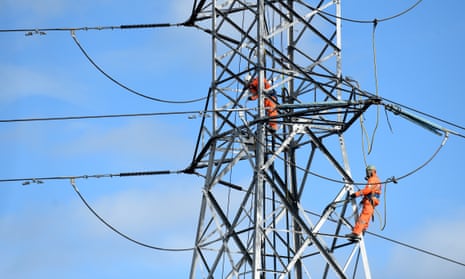SA Power Networks has said it knew a software glitch caused an additional 60,000 houses in South Australia to be out of power during load shedding this month.
Yet the state’s network operator stayed quiet for a week and a half while the Turnbull government continued to criticise the South Australian government’s use of renewables.
A Senate select committee held a public hearing on Monday to investigate Australia’s ageing energy infrastructure, less than three weeks after SA suffered yet another blackout – the result of a severe heatwave.
The Australian Energy Market Operator (Aemo) issued a report last week detailing the sequence of events that led to the recent blackout, saying load shedding was the only option available when it became clear a gas plant at Pelican Point was not available to respond to the surge in demand as local temperatures in SA soared.
It said it had directed load shedding of 100MW to preserve the security of the electricity grid but, for reasons it could not explain, the local network operator shed three times that amount – 300MW.
Officials from SA Power Networks admitted last week that a problem with their automated load shedding system put an extra 60,000 premises in the dark unnecessarily.
But on Monday, company officials also admitted they knew their IT system had been responsible for the extra load-shedding within minutes of the event, though they did not tell the public for a week and a half.
Greens senator Sarah Hanson-Young said: “So not until the Aemo report was released last week did South Australians know at all that more people went without power than necessary?”
Richard Sibly, the regulatory development manager from SA Power Networks said: “Yes, well we participated in that [report] and responded to that and undertook, and are still undertaking, investigations on the causes.”
Hanson-Young said: “So while there was a massive political storm brewing in Canberra and blame shifting from South Australia back to Canberra and everybody pointing fingers, SA Power sat silent knowing that you had shed three times as many households from accessing power on that day.”
Sibly replied: “Well we undertook our reviews in a timely fashion and tried to get to the root cause of the issue as soon as possible.”
The independent senator Nick Xenophon asked if, given SA Power Networks had admitted to a fault with its IT system, the company would be offering compensation to households who had their power unnecessarily cut off.
Sibly said he was not aware of any plans by the company to compensate households. He said customers should speak to their insurers.

Comments (…)
Sign in or create your Guardian account to join the discussion